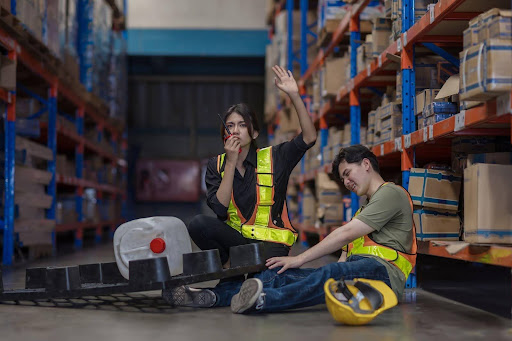- Preventable injuries usually begin as everyday habits that go unchecked
- Localised training helps staff apply safer techniques in real-world situations
- Unreported strain and time off can quietly cost more than formal claims
- Safety improves when training is practical, regular, and taken seriously
You already know a workplace injury isn’t just a medical issue. It throws off your entire workflow. Suddenly, someone’s off duty, tasks are reshuffled, and you’re stuck reacting again. But the real hit comes later. It shows up in staff turnover, insurance hikes, and production slowdowns. These aren’t headline problems.
They don’t scream for attention. Instead, they quietly wear down the system from within, draining time and resources in ways that don’t always show up in your reporting. When incidents become routine, the cost of inaction starts to climb. Not every injury is avoidable, but a lot of them are. And the difference usually comes down to whether your team has ever been shown a safer way that actually sticks.
Where Injuries Start and Why They Escalate
Workplace injuries aren’t always the result of big accidents. Often, it’s a quick twist, a heavy load lifted wrong, or a shortcut taken after a long shift. In some industries, that kind of behaviour is just seen as part of the job. The problem is, without consistent reinforcement, those habits turn into patterns. And once they’re embedded, the risks multiply. It’s not just the injury itself—it’s the ripple effect. One strain leads to time off. That gap puts pressure on others, which means more rushing, more corners cut, and more chances for something else to go wrong.
There’s also a knowledge gap. Many workers are trained informally, picking up tips from whoever showed them first. That creates inconsistency across teams. What feels like common sense to one person may be utterly foreign to another. If your crews don’t share the same standard for safe lifting, moving, or loading, even the best equipment won’t prevent strain. Most injuries are small until they aren’t, and by the time they show up in your claims data, the damage has already been done.
Why Local Training Pays Off in the Long Run
The real value in safety training isn’t just the delivery it’s how tailored the message is to your actual work environment. That’s where local providers come in. They’re not handing out generic manuals or giving examples that don’t match your gear. They know what kinds of loads your teams handle, what the state regulations expect, and how to spot risks that aren’t obvious to someone outside your industry.
In physically demanding roles, even one manual handling course Adelaide employers trust can shift how tasks are approached across an entire team. The right training doesn’t just tick a compliance box it helps people rethink the way they move, lift, and manage physical strain. When workers see that the techniques actually work in their day-to-day jobs, they’re more likely to keep using them long after the session ends. That’s what separates practical training from forgettable content: it translates directly into safer habits on the floor.
The Quiet Costs That Add Up Fast
Every injury has a visible cost a claim, a replacement shift, maybe some physio. But the full impact rarely stops there. When one person goes down, timelines stretch. You’re scrambling to reshuffle tasks, cover gaps, and keep things moving with fewer hands. Admin hours pile up, too. Between reports, follow-ups, and external reviews, your team loses focus on their actual jobs. Then there’s the human side: stress, fatigue, and the hit to team morale. If workers start thinking injuries are just part of the job, they stop speaking up, and those small aches get pushed aside until they become major issues.
It’s also worth thinking about reputational cost. If a pattern of injuries starts to emerge, word gets around. New hires hesitate. Existing staff burn out faster. Clients notice delays or missed milestones. What appears to be an isolated incident in a report is often part of a larger trend. The only real way to slow that trend is by making safety part of everyday thinking, not something people only remember when it’s too late.
Making Training a Business Priority, Not a Box to Tick
Safety sessions often get squeezed in between more “urgent” jobs. But when training is treated as optional or purely procedural, that’s exactly how staff will treat the message. The difference happens when teams see it as something that protects them, not just the company. That shift only happens if the training feels relevant. When examples are job-specific, and instructors actually understand what the work involves, people tune in. They ask questions. They start to care about doing things right, not because someone told them to, but because they see the value in it.
Leadership sets the tone. If managers treat safety training like a genuine investment, staff will follow suit. It’s not about long lectures or formal checklists it’s about giving people clear, simple strategies they can apply immediately. When those sessions are regular, practical, and part of how the business runs—not a one-off in the breakroom safe behaviour becomes normal, not enforced. And over time, the need for injury response diminishes, as the risk itself is quietly removed, shift by shift.
Conclusion: Small Shifts That Prevent Bigger Disruptions
Injury prevention isn’t just about staying compliant it’s about protecting the daily flow of your operations. When safety habits are embedded into real tasks, not just manuals, the benefits show up quietly but consistently.
Fewer disruptions, better morale, smoother handovers. Those things don’t happen by accident. They occur when training aligns with the language of the work itself. And when it does, injuries stop being something you brace for and start becoming something you avoid altogether.


